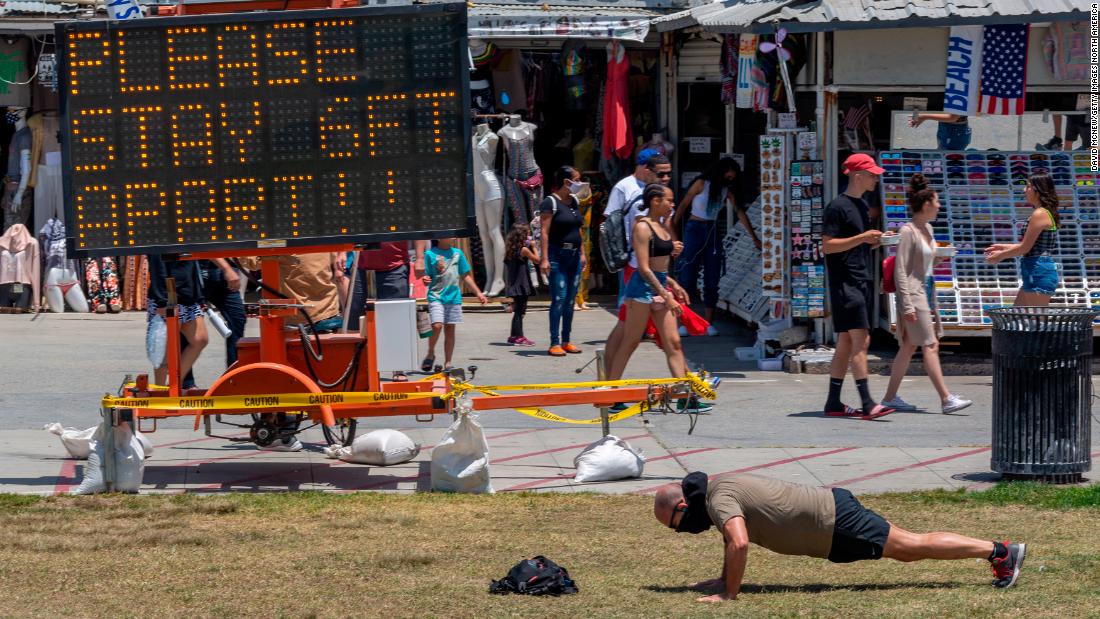[ad_1]
Our responses to hearing these numbers seem to vary widely — some of us lock ourselves away in our homes, while others tell ourselves the threat of infection is over.
Rather than running to one of these extremes, it would be better for people to understand the risk and to make choices based on information. But with so much news and data hitting us from so many different sources, how do we make good choices for ourselves and our families?
Most people would look at the number of new cases per day and think this would be a good metric, but it’s not. Cases per day can be manipulated by the number of tests processed per day. When states test more often, they find more infected people. And testing more every day is a good thing.
Every person who tests positive to the virus can be subsequently isolated, which breaks a transmission chain. You want to see your state testing more, so let’s not crucify states that are increasing their testing when they report the inevitable result of an increase in confirmed cases — especially because the alternative is far worse.
If your state tests fewer people, then the true dynamics of what is going on will be hidden.
In states where they are selectively testing and testing hotspots, then we want the number to be below 5%. In both cases, the lower the number the better the state is doing at responding to the pandemic; a decline in the percentage of positive tests also is a good sign. Nationally, the percentage of tests that come back positive is about 4.5% and flat, but this number varies greatly depending on the state and county.
This may signify that they are testing largely in hotspots, but the overall trend is not good. In contrast, the early hard-hit states like New York, Massachusetts, and Michigan are all doing well and improving. We know this because the percentage of tests that come back positive and the daily number of new infections is falling.
The truth about herd immunity
One of the questions I am often asked is about herd immunity
But immunity can only occur by natural infection or vaccination, and there is no guarantee that immunity from natural infection will be long-lasting. Only time will tell.
This puts us a long way from beating this virus through natural exposure and the prospect of a successful vaccine remains uncertain. Therefore, we must find a way to live with this virus without sacrificing 1% of our population or going back to the strict restrictions of March and April.
However, a second wave of high infection rates and similar mortality rates is avoidable.
What does this mean for your summer?
Our choices over the coming months will determine the trajectory of this pandemic. If we continue to pursue activities that pose a high risk for infection, such as large indoor gatherings, then we will hear the roar of that second wave sooner than later.
If we take a more measured approach, by improving hand hygiene, limiting daily interactions with other people, maintaining physical distance and increasing face mask use when we can’t maintain the distance, then businesses can operate safely, people can return to work and the activities our children are missing can resume.
Our goals must be to lower the risks of infection and reduce harm.
On the other hand, if I was living in a county where the test-to-positive ratio was at 10%, limiting daily interactions, physical distancing and mask use would become critical to lower the risk of infection.
Even at Montana’s envious numbers (0.4%), a gathering of 250 people would mean that at least one of those people in attendance would be infected and could infect others. And in another state, the thought of putting 19,000 people into an indoor venue for a rally, when the infection rates are already much higher than Montana, certainly has my attention.
Despite the threat of infection, there are many things I am looking forward to this summer: my first meal at a restaurant (dining outdoors), visiting with more than one or two households at a time, and spending time at the beach. These interactions will be a little different than last summer.
We will have to keep personal risks and risk mitigation measures in mind, but these adjustments are well worth the payoff of getting to enjoy some of my family’s usual summertime activities.
We all have a responsibility to reduce harm, not just to ourselves, but also to the greater community. Our actions, and the choices we make over the coming weeks and months, will dictate what comes next and, dare I suggest, even decide whether and when we have a second wave.
[ad_2]
Source link



